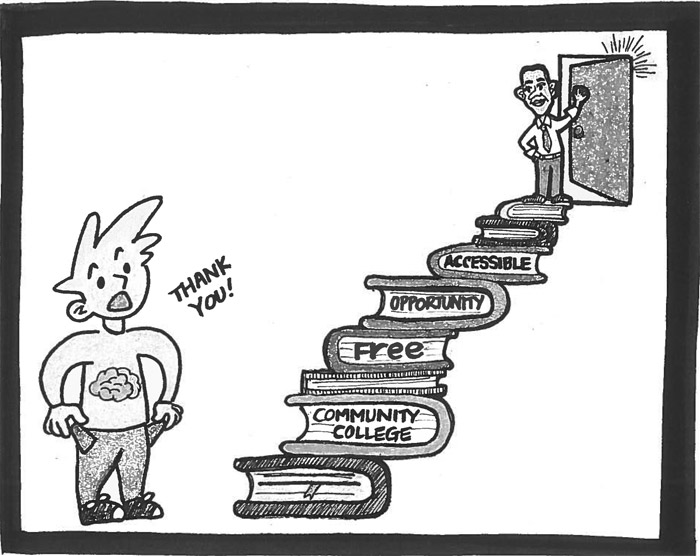Earlier this month, The White House released a short video on its Facebook and Twitter pages in which President Barack Obama made a proposal to make community college free for two years of each students’ education. As long as students attend half of the required classes and maintain a 2.5 GPA, they would not have to pay for tuition. His proposal raises important questions regarding the role of the state versus the role of individuals in bearing the cost of education. But, more generally, the proposal would promote greater equality of opportunity in a society stratified along income lines.
The proposal states that the costs of two years in a community college should be shared between the state (25 per cent of the expenses) and the federal government (75 per cent of the expenses). More precisely, it would mean that each student would save up to $3,347, the average cost of two years at community college. Although this amount of money may seem rather small compared to the price of other universities, it would make a significant difference for middle-income and low-income students. Many students in the U.S. graduate with large amounts of debt. Moreover, some students cannot even afford a federal loan. These young people usually register for part-time education in order to be able to also have a job and pay for their education expenses. The proposal would eliminate the need for student loans for community colleges, and would also allow students to attend college full-time. But, more importantly, free education means equality of opportunity. A degree can lead to a better job, better life prospects and possible upward social mobility. Obama himself qualified community colleges as “essential pathways to middle-class,” notably thanks to their flexibility for people who want to improve their education and skills, but have neither the money nor the time to spend on a four-year program at university. Ultimately, making community college free would start to bridge the gap in the education provision and provide a remedy to the growing economic and racial stratification in higher education. Although some journalists, such as Michelle Weis of The Wall Street Journal, argue that this plan is a “dead-end” for improving the overall future prospects of students, this proposal will at least make a difference for middle-class students who will largely benefit from state funding.
Education reform seems to be on the agenda of many governments recently; Obama’s proposal is only one of several policies that we have heard of in the news. On one side of the spectrum, Germany made the huge decision in October 2014 to make education free for all, including international students. Although this shift may seem enormous by North American standards, it is important to remember that Germany was already on that path with a culture of affordable education, and is now part of larger group of European countries with free education. On the other hand, Quebec recently decided to raise tuition fees for French students who previously paid the same amount as Quebec students, displacing the burden of education to students instead of the government. More generally, all these policies fit into the debate about whether taxpayers as a whole, or the individuals themselves, should pay for education. Obama’s proposal is situated on the end of the spectrum, shyly following Germany’s giant steps, and trying to reach to taxpayers’ altruism civic responsibility. As one advocate for public university said, the private university system is “an incomprehensible repudiation of the whole philosophy of a successful democracy premised upon an educated citizenry.” When people do not have the same opportunities, they do not have the same potential to achieve the “American Dream.”








